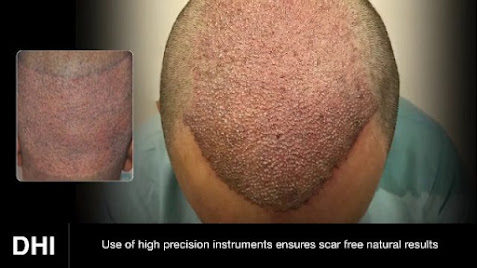Hair Transplant Techniques
Hair transplant
is the surgical procedure in which dermatologist surgeons pluck hair follicles
from the hairy side called the donor site, to the baldness side called the
receptor side. This technique is used not only on the scalp hair but also for
eyebrows, eyelashes, chest hair, pubic hair, and beard hair. Many kinds of
research reveal that 40% of men of the total population are facing hair loss
problems at the age of 35. 20 % of women are also facing the same problem. Many
factors can cause hair loss problems such as stress, malnutrition, medicine’s
side effects, hormonal imbalance, and another kind of illness. That is the
reason; the hair transplant technique is getting trending day by day.
There are two
types of hair transplant techniques: FUT and FUE. FUT stands for follicle unit
transplantation. FUT is also called strip harvesting. It is the most common
technique in which a surgeon removes the hair from the donor site and places
them on the receptor side. Area of harvesting is chosen, where hair growth is
good. Surgeons harvest the strip of skin from the donor site. A scalpel can be
single, double, or triple, depending upon the requirement of harvesting. Hair
follicles removed by the planned incision. These are very tiny, so surgeons use
a microscope for performing this procedure. They cautiously remove the fatty
tissues and extra fibrous so that follicles cannot be damaged. This procedure
leaves a scar on the surface but it can be covered with hair growth. The
surgeon uses the small needles for puncturing the receptor area and they
carefully place the follicles here. Stitches are required for the wounds and
the healing period of the scalp is two weeks. Stitches also need to be removed
after two weeks.
FUE stands for follicle unit
extraction.
FUE can perform in one long session or multiple sessions. In this procedure,
surgeons do small punches on the donor area and collect follicles, and then
place them in the receptor area. In FUE surgeons can extract200 grafts from the
donor site and place them in the receptor area for producing about 2500 to 3000
hairs. That technique is used for a large area of transplantation. That is the
reason it is getting popular day by day. Hair grows naturally in this
procedure, and tiny punchers cannot be seen from the physical eye. There is no
visible scar made in this procedure and the risk of post-surgery pain reduces.
Recovery time is seven days, lesser than FUT. Clients are more satisfied with
this procedure. However, FUE is more expensive than FUT. FUE takes more time
than FUT. Surgery decisions are made according to the medical report and choice
of clients.
Side effects of
hair transplant techniques are rare, but they exist. They include
swelling of the scalp, bleeding, itching, infection of the follicles, called
folliculitis, numbness on the treated area, blemishes around the eyes, and
unnatural looking of hairs. These side effects can be reduced if the patient
follows the proper instruction as prescribed by the surgeon. Avoid driving
after this procedure because dermatologists give you some seductive medicines,
and this can cause dizziness that is dangerous for driving. To avoid
inflammation and pain, don’t lay flat on the bed. Elevate your pillow at 45
angles for the first seven days. Antibiotics should be taken after the surgery.
Don’t ignore your doctor’s post-treatment prescription. In the initial days,
don’t scrub and shampoo your hair to avoid itching. Avoid exposure to the
sunlight. Try to cover your head for at least seven days after treatment. Don’t
dye your hair for some time. It has chemicals and can cause infection. If you
want to get rid of baldness, choose the best hair transplant technique with the
consultation.

